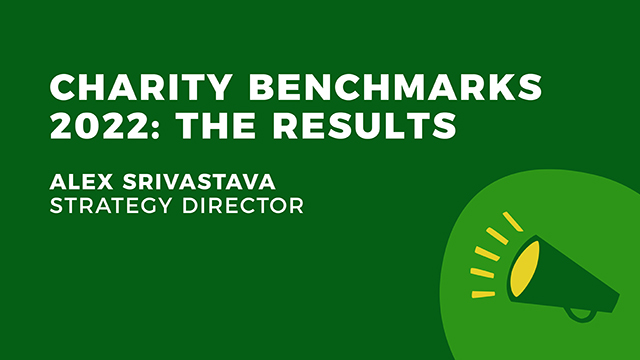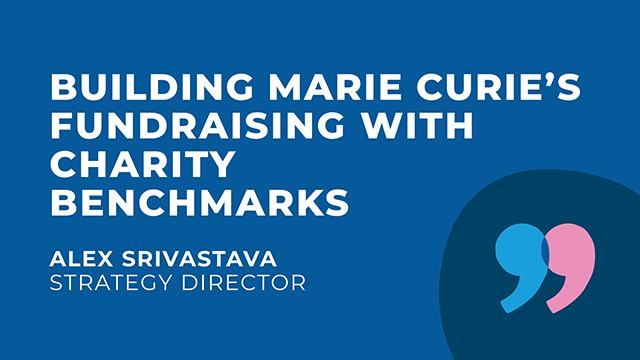What’s next, events fundraisers?

It’s a tough time for events fundraisers. But behind these short-term challenges, there’s a longer, slower and more worrying decline in the once great world of mass participation. Here’s our take on what events fundraisers need to do next.
Net income is down*, ROIs are down*, and for many, CPAs are up.
If Charity Benchmarks is anything to go by, the cost of living crisis has only accelerated the area’s decline. Fundraisers are understandably worried.
There are a range of potential reasons for this.
The pandemic hit events hard, and the category hasn’t bounced back like we all hoped. The cost of living crisis is making people reluctant to ask peers for money. And some of the oldest, biggest events in the category are in natural product decline.
The need for innovation
How long have we been using the same models?
When so much around us and in the lives of supporters has changed, has the events category moved forward fast enough? Or been empowered to move forward by trustees ready to invest in innovation?
This is especially crucial for a category that trends toward younger donors.
There’s a real need for innovation – transformational innovation – that moves us beyond incremental product development that builds on competitor models. We need to develop new ones that meet the needs of today’s participants.
Open has launched a number of new models of giving to the market over the years from PSMS and value exchange, to British Heart Foundation’s My Marathon – one of the first virtual events to market.
And we want to do the same thing again now.
We’ve got some ideas that we’re excited about, so if you are an events fundraiser who is interested in trying something new, get in touch.
“There’s a real need for innovation – transformational innovation – that moves us beyond incremental product development.”
Quick wins to get us through the cost of living crisis
Right now, there are signs that people just aren’t comfortable asking friends and family for money during the cost of living crisis.
So, while innovation is essential, it’s not going to happen overnight and there are some quick wins we can use to help get remittance up while the cost of living crisis remains.
Most of them involve equipping participants with what they need to make asking for money easier.
1. Tailor your welcome materials
Make sure your welcome pack and journey are focused on helping participants ask (they’re not fundraisers!) We need to make asking as easy as possible. Why not create a short video they can share so we do the asking for them?
2. Give fundraisers a tangible shopping list
Don’t lose sight of the cause. It might not always be the motivation for participation, but it makes asking friends and family easier if they can say that £10 will do X.
3. Make fundraising competitive
People are more likely to do something if there’s a reward in it for them. Can you incentivise them to keep going with their fundraising?
4. Test making the money less visible
Ok, this might sound risky but we think it’s an interesting one to test. On many popular event fundraising platforms, the social element of giving is very prominent, and there’s a pressure to match what people have given before you. But right now, people might not feel able to give as much. So removing this element, or promoting anonymous giving might encourage more, smaller gifts.
5. Give people the opportunity to sign up to your mailing list rather than donate to you
Another potential test is to lower the barrier to entry. Make a campaign action or signing up to your mailing list the simplest way to help. It might prompt people to give just so they can avoid doing the minimum available option (like the cognitive bias that makes people order the second cheapest wine on the menu). Plus you’ll get their data, which could be worth more in the long term.
6. Get employers involved
The overlap between events and employee engagement is huge. So if you’re not already collaborating with your partnerships colleagues, now is a good time to.
You could also encourage participants to ask their employers to match what they raise. It’ll up your income, but also make it a more compelling ask of friends and family for your participants.
7. Ask for less
The Run 5 / Give 5 / Nominate 5 model. Activity in the pandemic was great for a load of reasons. But we like it best because it was a small, accessible amount. We’ve not seen many charities taking this model and running with it – there might be room for more small, social events.
Ready for change? We’re ready to help the sector develop the next events category. If you’re in, get in touch.
*Charity Benchmarks 2022. Get your free copy here.

